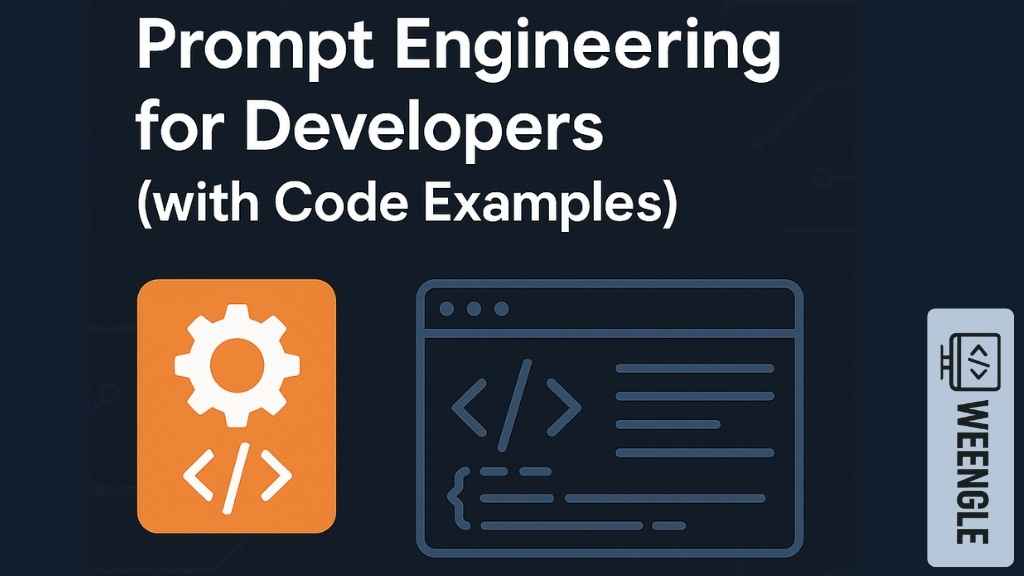Introduction to Prompt Engineering
Prompt engineering is the art of crafting effective prompts to communicate with AI language models, such as OpenAI’s GPT-4. As AI continues to revolutionize software development, developers who understand prompt engineering can unlock powerful capabilities, from natural language understanding to automated coding.
Whether you’re building chatbots, AI tools, or integrating machine learning into your applications, mastering prompt engineering will help you create more accurate and context-aware interactions with AI.
Why Prompt Engineering Matters for Developers
- Improved response accuracy
- Reduced hallucinations
- Better control over tone, length, and output format
- Higher quality AI-assisted applications
Getting Started with Prompt Engineering
To get started, you’ll need access to an AI model via an API (like OpenAI). You can use Python, JavaScript, or other languages, but here’s a simple example using Python with the openai library.
🔧 Python Setup
pip install openai🧠 Basic Prompt Example
import openai
openai.api_key = "your-api-key"
response = openai.ChatCompletion.create(
model="gpt-4",
messages=[
{"role": "system", "content": "You are a helpful programming assistant."},
{"role": "user", "content": "Explain what a Python decorator is with an example."}
]
)
print(response['choices'][0]['message']['content'])💡 Output:
A Python decorator is a function that modifies the behavior of another function…
Techniques to Improve Your Prompts
1. Use Clear Instructions
Avoid vague prompts. Be specific about what you want.
✅ Good:
“Write a Python function that returns the Fibonacci sequence up to n.”
❌ Bad:
“Tell me about Fibonacci.”
2. Define Roles and Context
{"role": "system", "content": "You are a strict code reviewer who suggests improvements with examples."}3. Provide Examples
messages = [
{"role": "system", "content": "You translate plain English instructions into Python code."},
{"role": "user", "content": "Add two numbers."},
{"role": "assistant", "content": "def add(a, b):\n return a + b"},
{"role": "user", "content": "Check if a number is even."}
]4. Specify Output Format
{"role": "user", "content": "Return the result in JSON format with fields: 'description' and 'code'."}5. Use Temperature and Max Tokens Wisely
response = openai.ChatCompletion.create(
model="gpt-4",
messages=messages,
temperature=0.3, # Less random
max_tokens=300 # Limit output
)Common Use Cases for Developers
- Automated Documentation
- Code Generation
- Bug Explanation and Fix Suggestions
- Chatbot Development
- SQL Query Generation
- Data Formatting and Extraction
Prompt Engineering Best Practices
- 🧪 Iterate Often – Test and refine prompts regularly.
- 🧱 Break Down Complex Tasks – Simpler prompts give better results.
- 🧭 Guide the AI with Clear Goals – Tell the AI what, how, and why.
- 📋 Log and Version Prompts – Keep track of what works.
Final Thoughts
Prompt engineering is a critical skill for modern developers working with AI. By learning how to craft effective prompts, you can create smarter, more reliable, and context-aware AI-powered applications.
Whether you’re building an AI assistant or improving developer tools, prompt engineering bridges the gap between natural language and powerful code.
Frequently Asked Questions (FAQs)
Q: What is the best tool for prompt engineering?
A: OpenAI’s Playground and PromptPerfect are great for testing and refining prompts.
Q: Can prompt engineering replace coding?
A: Not completely—but it complements coding by automating and enhancing certain tasks.
Q: Do all AI models use the same prompt format?
A: No, formatting can vary between models like OpenAI, Claude, or LLaMA.

